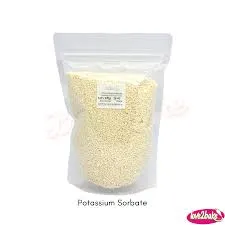
Exploring the Applications and Properties of Propargyl Alcohol in Organic Chemistry and Industry
Propargyl Alcohol Properties, Uses, and Safety Considerations
Propargyl alcohol, chemically known as 3-buten-1-ol, is an organic compound with the formula C3H4O. It is classified as an alcohol with a triple bond in its structure, which differentiates it from more common alcohols. The compound has a CAS (Chemical Abstracts Service) number of 107-18-6, a unique identifier that allows for the easy identification of chemical substances in databases. This article will explore the properties, applications, and safety considerations associated with propargyl alcohol.
Properties of Propargyl Alcohol
Propargyl alcohol is a colorless, viscous liquid with a slightly pungent odor. It has a boiling point of 113 degrees Celsius and a melting point of -14 degrees Celsius, making it a stable liquid at room temperature. One of its most notable features is the presence of both an alcohol functional group (-OH) and a terminal alkyne group (C≡C), which imparts unique reactivity compared to other alcohols.
This dual functionality allows propargyl alcohol to engage in various chemical reactions, making it a versatile building block in organic synthesis. It is soluble in water and most organic solvents, which facilitates its use in a wide range of applications.
Applications of Propargyl Alcohol
Propargyl alcohol is used primarily in the synthesis of fine chemicals and pharmaceuticals. Its unique structure makes it an excellent precursor for the production of various compounds, including
1. Pharmaceuticals Propargyl alcohol is often utilized in the synthesis of drugs. Its reactive alkyne group allows for easy modifications, leading to the creation of complex molecular structures that are vital in medicinal chemistry.
propargyl alcohol cas

2. Chemicals and Plastics The compound serves as an intermediate in the production of various chemicals and plastics. It can be converted into propargyl derivatives, which find applications in the manufacturing of polymers and resins.
3. Agrochemicals Propargyl alcohol has applications in the formulation of pesticides and herbicides. The reactivity of its terminal alkyne facilitates the development of new agrochemical agents with improved efficiency.
4. Research and Development Due to its unique chemical properties, propargyl alcohol is frequently utilized in research settings for synthesizing new compounds and studying reaction mechanisms.
Safety Considerations
Despite its numerous applications, safety precautions are essential when handling propargyl alcohol. The compound is flammable and may pose fire risks if mishandled. It is advisable to store propargyl alcohol in a cool, dry place away from light and ignition sources.
Exposure to propargyl alcohol can cause skin irritation, and inhalation of its vapors may result in respiratory discomfort. Therefore, personal protective equipment such as gloves, goggles, and appropriate respiratory protection is recommended during handling. It is crucial to adhere to appropriate safety guidelines and regulations when using this compound, particularly in industrial settings.
Conclusion
Propargyl alcohol is a significant chemical with a range of applications in pharmaceuticals, chemicals, and research. Its unique structural features provide valuable reactivity that makes it an important building block in synthetic chemistry. However, due to its flammability and potential health hazards, proper handling and safety measures are vital. As research and development in the field of organic synthesis continue to expand, propargyl alcohol will likely remain a compound of interest for chemists and industrial professionals alike.
-
nitrile-rubber-honoring-strict-production-standardsNewsAug.22,2025
-
aspartame-ingredients-honoring-food-safety-valuesNewsAug.22,2025
-
fertilizer-for-balanced-plant-nutritionNewsAug.22,2025
-
cyanide-gold-processing-with-high-purity-additivesNewsAug.22,2025
-
formic-acid-in-textile-dyeing-applicationsNewsAug.22,2025
-
aluminum-hydroxide-gel-in-skincare-productsNewsAug.22,2025
-
Regulatory Compliance for Global Mining Chemicals UseNewsAug.12,2025
Hebei Tenger Chemical Technology Co., Ltd. focuses on the chemical industry and is committed to the export service of chemical raw materials.
-

view more DiethanolisopropanolamineIn the ever-growing field of chemical solutions, diethanolisopropanolamine (DEIPA) stands out as a versatile and important compound. Due to its unique chemical structure and properties, DEIPA is of interest to various industries including construction, personal care, and agriculture. -

view more TriisopropanolamineTriisopropanolamine (TIPA) alkanol amine substance, is a kind of alcohol amine compound with amino and alcohol hydroxyl, and because of its molecules contains both amino and hydroxyl. -

view more Tetramethyl Thiuram DisulfideTetramethyl thiuram disulfide, also known as TMTD, is a white to light-yellow powder with a distinct sulfur-like odor. It is soluble in organic solvents such as benzene, acetone, and ethyl acetate, making it highly versatile for use in different formulations. TMTD is known for its excellent vulcanization acceleration properties, which makes it a key ingredient in the production of rubber products. Additionally, it acts as an effective fungicide and bactericide, making it valuable in agricultural applications. Its high purity and stability ensure consistent performance, making it a preferred choice for manufacturers across various industries.





